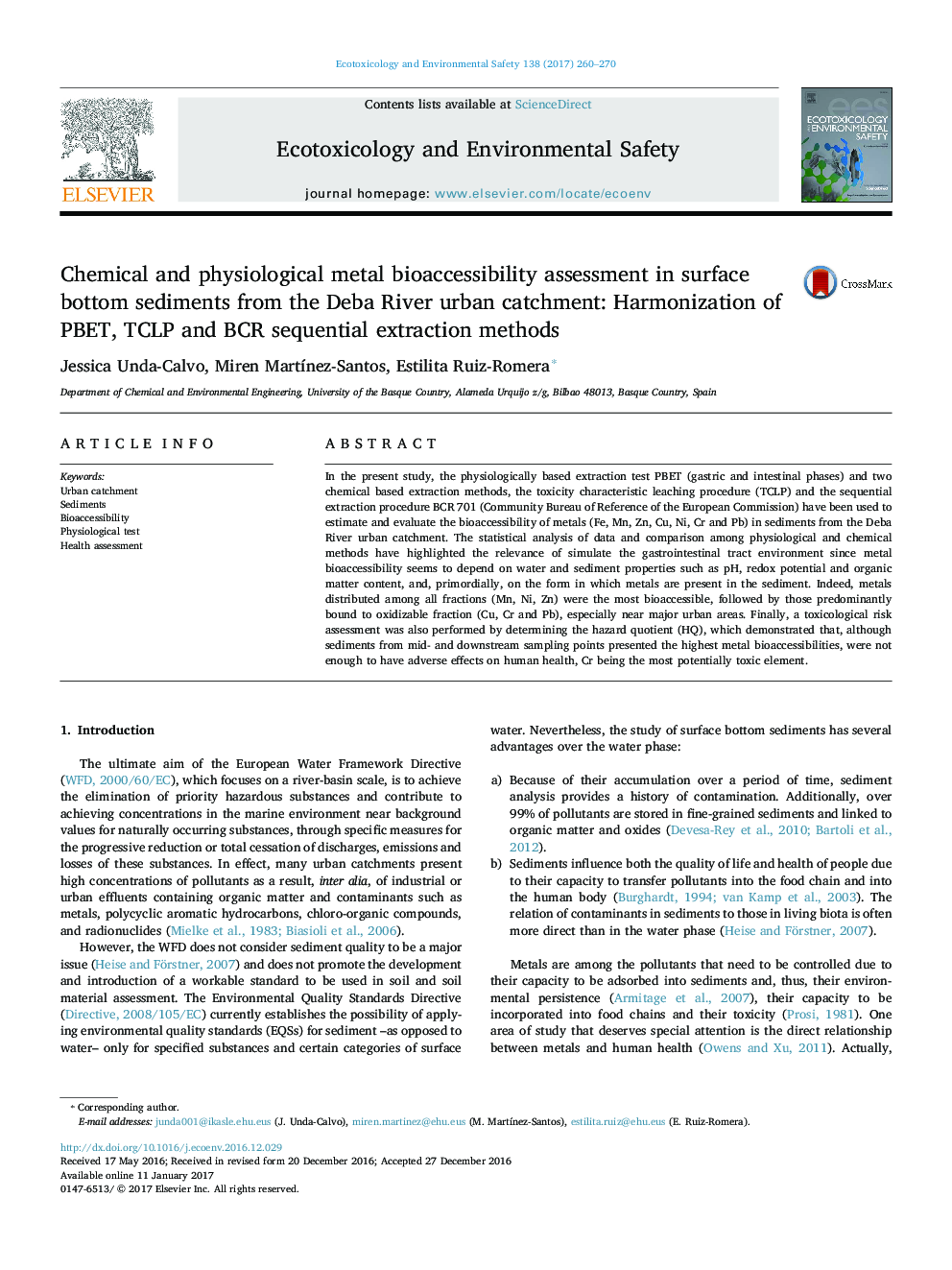| کد مقاله | کد نشریه | سال انتشار | مقاله انگلیسی | نسخه تمام متن |
|---|---|---|---|---|
| 5747963 | 1618926 | 2017 | 11 صفحه PDF | دانلود رایگان |

- Wider investigations on bioavailability of sediment bound contaminants are fostered.
- Parameters governing gastrointestinal operation should be considered on measurements.
- Metal speciation to deepen in the knowledge of the bioaccessibility is proposed.
- Untreated and partially treated wastewater inputs provide more bioaccessible metals.
In the present study, the physiologically based extraction test PBET (gastric and intestinal phases) and two chemical based extraction methods, the toxicity characteristic leaching procedure (TCLP) and the sequential extraction procedure BCR 701 (Community Bureau of Reference of the European Commission) have been used to estimate and evaluate the bioaccessibility of metals (Fe, Mn, Zn, Cu, Ni, Cr and Pb) in sediments from the Deba River urban catchment. The statistical analysis of data and comparison among physiological and chemical methods have highlighted the relevance of simulate the gastrointestinal tract environment since metal bioaccessibility seems to depend on water and sediment properties such as pH, redox potential and organic matter content, and, primordially, on the form in which metals are present in the sediment. Indeed, metals distributed among all fractions (Mn, Ni, Zn) were the most bioaccessible, followed by those predominantly bound to oxidizable fraction (Cu, Cr and Pb), especially near major urban areas. Finally, a toxicological risk assessment was also performed by determining the hazard quotient (HQ), which demonstrated that, although sediments from mid- and downstream sampling points presented the highest metal bioaccessibilities, were not enough to have adverse effects on human health, Cr being the most potentially toxic element.
Journal: Ecotoxicology and Environmental Safety - Volume 138, April 2017, Pages 260-270